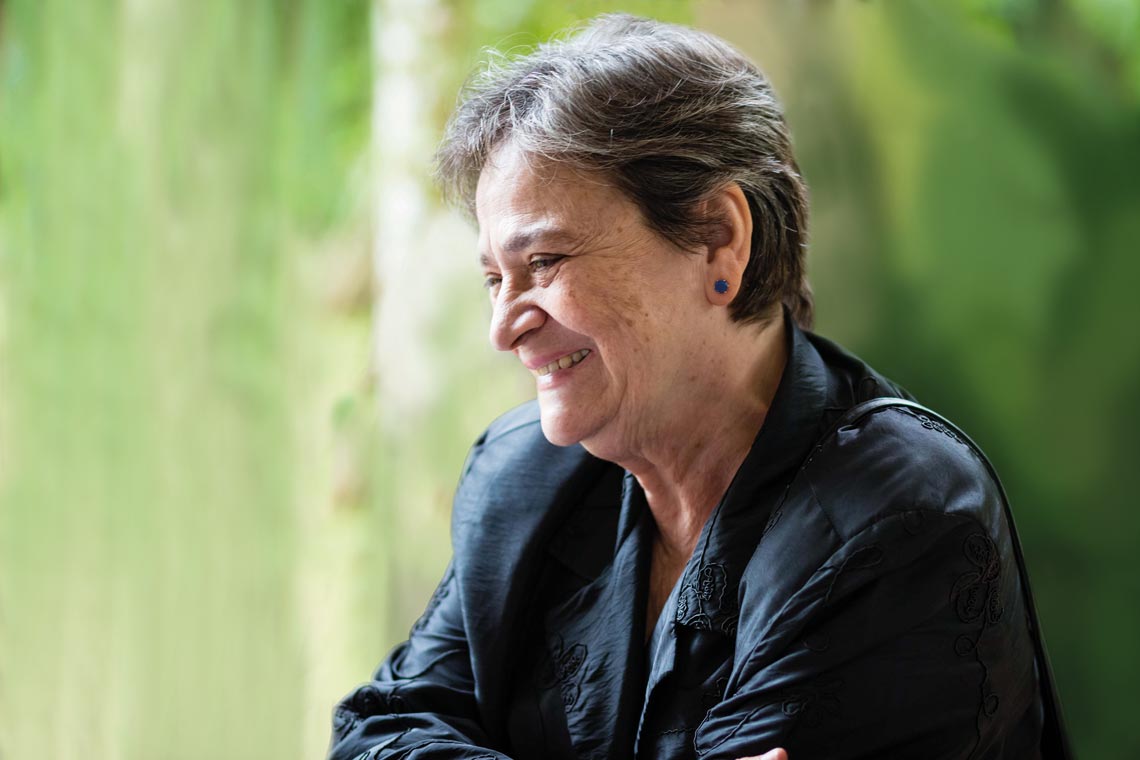Journalist Maria da Graça Soares Mascarenhas worked as the coordinator of communications and publications for FAPESP. As the communications manager for the Foundation since 2002, she built teams and adapted methods of journalistic work and editorial planning to the unique elements of the world of science, taking care that the news was presented in a balanced way. Graça died of cancer on March 9 at 71 years of age.
During a good part of her professional life, Graça worked as a reporter or editor of high-circulation publications. She worked with the following publications: Visão, O Globo, O Estado de S. Paulo, Gazeta Mercantil, Revista Brasileira de Tecnologia, Globo Ciência (today Galileu), and Pequenas Empresas & Grandes Negócios. In 1997, she joined a new communications team at FAPESP, under the direction of journalist Mariluce Moura. Together they began to publish the results of research projects funded by the Foundation to journalists, who in general knew very little about the institution. “Graça always had an extreme passion for accuracy of information and exuded integrity. She was a key part of the history of communications policy at the Foundation,” confirms José Fernando Perez, scientific director at FAPESP between 1993 and 2005.

Reproductions
Covers of the annual Activity report with a tribute to visual artists Renina Katz (2013), Maria Bonomi (2014), Paulo Pasta (2015) and OsGêmeos (2016)ReproductionsAs executive editor of the news bulletin Notícias FAPESP, created in 1995, Graça took care of editorial planning. Her experience with monthly magazines was fundamental in transforming Notícias FAPESP into Pesquisa FAPESP in 1999. She prioritized the verification of information and respect for the researchers: “Finesse always,” she recommended one day to the team which grew with the magazine. With her eye for detail, not only with the text but also with the images, she was later joined by graphic artist Hélio de Almeida, who created the graphic design of Pesquisa FAPESP and was its art director until the early 2000s. “Graça took care of everything, and was an organizer. She was always very calm and was the life of the magazine,” says Almeida.
In 2002, she became the communications manager at the Foundation and strengthened the institution’s promotional team. “The team that Graça built and elegantly coordinated had, and still has, a mentality of continual improvement. Together, we created Agência FAPESP in 2003,” said linguist Carlos Vogt, president of the Foundation between 2002 and 2007. Graça coordinated the edition Indicadores de ciência, tecnologia e inovação (Indicators of science, technology, and innovation) and the annual Relatório de atividades (Activity report) of FAPESP, starting in 2001, among other publications. Her most recent projects include the debate program Ciência Aberta (Open Science), with Folha de S.Paulo (since 2018), and the weekly bulletin Pesquisa para Inovação (Research for Innovation) launched in 2016.

Reproductions
Bulletin of April 1997: first edition in which the journalist appearsReproductions“Graça had an undoubtable intellectual integrity, an immense sense of responsibility, and an unshakeable dedication to the Foundation and to the institution’s role on the research scene in São Paulo and throughout Brazil,” said Celso Lafer, president of FAPESP between 2007 and 2015. “She liked the preparation of the Relatório de atividades (Activity report) and the selection of the artists who illustrated this publication.”
Interest in art
Her interest in the visual arts dates back a long time. In 1997, the journalist coordinated an edition with select poems by Castro Alves (1847–1871) in honor of the 150th anniversary of the poet’s birth. Each poem was illustrated by an original work by a contemporary artist from Bahia, such as Emanoel Araújo and Caribé.
“I met Graça in 1997, when I was president of FAPESP and she came to help us restructure the initiatives in communications,” commented Carlos Henrique de Brito Cruz, scientific director of the Foundation and president of the institution between 1996 and 2002. “Over these 22 years, Graça was a defining factor for institutional communications at FAPESP. She dedicated herself to creating and facilitating communication with the public, building and leading an exceptional team.”
Marco Antonio Zago, president of FAPESP, regretted having spent very little time with Graça as he only assumed the role in October 2018. But he highlighted that this short time period was enough for him to recognize the quality of her work, in addition to her kindness and dedication. According to Carlos Américo Pacheco, Chief Executive Officer of the Executive Board of the Foundation, Graça had a profound understanding of her profession. “She was a natural leader as she was passionate about her work. She knew how to counsel management with wisdom and elegance,” he said. Fernando Menezes de Almeida, administrative director of FAPESP, also shared his admiration for the journalist: “She was one of those people who make a difference, not only by perfectly fulfilling her role, but also by exceeding expectations to benefit the Foundation and public interest.”

Reproductions
Graça edited two volumes about Castro Alves for the 150th anniversary of the poet’s birthReproductionsFor journalist Mariluce Moura, ethical stance of the highest level, generosity, and an extraordinary capacity to work are qualities associated with her character. “In addition to family members, Graça left behind many colleagues, friends, and people who admired her quiet wisdom, her thoughtful and caring way, accompanied by an unshakeable determination of purposes and principles,” she declared.
From Salvador, Bahia, Graça did her first undergraduate year in journalism at the Federal University of Bahia in 1969, after studying at the School of Sociology and Politics in Salvador, which was closed by the military government at the end of 1968. She moved to São Paulo and graduated from the School of Communications and Arts at the University of São Paulo. She leaves behind her husband, journalist Yves Leon Winandy, and her daughter, biologist and English professor Mariana Mascarenhas Winandy.
Republish